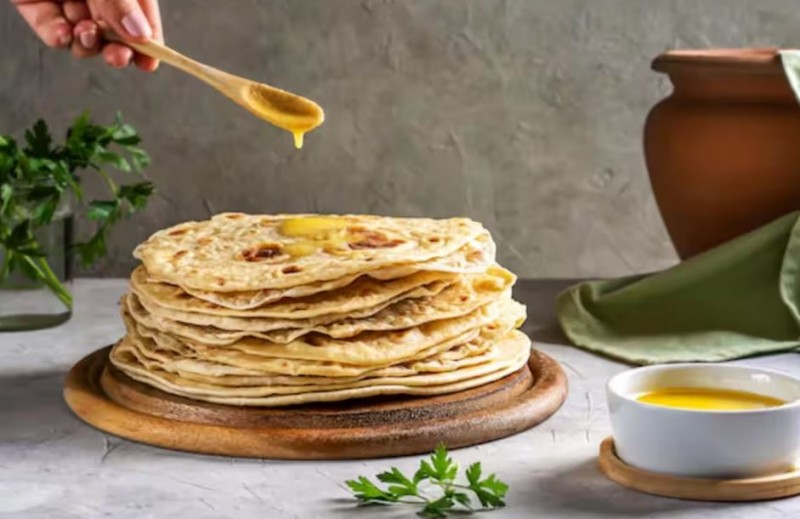
Ghee, a clarified butter derived from milk, has been an integral part of traditional Indian cuisine for centuries. Besides enhancing the taste of various dishes, ghee offers numerous health benefits. One popular culinary practice in Indian households is to apply ghee on chapatis, and unleavened flatbreads, before serving. This article explores the nutritional advantages of applying ghee to chapati, shedding light on the potential positive impact on overall health.
Rich Source of Healthy Fats:
Ghee is primarily composed of saturated fats, monounsaturated fats, and small amounts of polyunsaturated fats. Contrary to the long-standing misconception that all saturated fats are harmful, certain saturated fats like those found in ghee have shown positive effects on health. The presence of healthy fats in ghee aids in better nutrient absorption and boosts the body's energy levels.
Enhanced Nutrient Absorption:
Chapatis, made from whole wheat flour, is a staple in Indian diets. Whole wheat contains phytic acid, which can hinder the absorption of essential minerals like calcium, iron, and zinc. When ghee is applied to chapati, the fat content helps neutralize the phytic acid, improving the bioavailability of these vital nutrients.
Improved Digestion:
Ghee possesses butyric acid, a short-chain fatty acid that promotes a healthy digestive system. When combined with chapati, it can soothe the gut lining, reducing inflammation and promoting smoother digestion. People with lactose intolerance can often tolerate ghee due to the removal of milk solids during the clarification process.
Boosts Heart Health:
Surprisingly, ghee has shown potential benefits for heart health when consumed in moderation. Research suggests that ghee contains antioxidants that may protect against oxidative stress and inflammation, contributing to a reduced risk of cardiovascular diseases. However, it's essential to consume ghee in appropriate amounts, as excess consumption may have adverse effects on heart health.
Aids Weight Management:
While ghee is calorie-dense, applying it to chapatis can aid in weight management when consumed mindfully. The healthy fats in ghee induce satiety, reducing overall food intake. The moderate amounts used in chapatis can help prevent overeating and support portion control.
Supports Bone Health:
Chapatis, when combined with ghee, can contribute to better bone health. The fat-soluble vitamins (A, D, E, and K) present in ghee are essential for calcium absorption and play a vital role in maintaining bone density. Regular consumption of ghee-enriched chapatis may help prevent bone-related disorders such as osteoporosis.
Conclusion:
Applying ghee on chapatis not only enhances their taste but also provides an array of health benefits. From promoting nutrient absorption to supporting heart and bone health, the combination of ghee and chapati is a time-honored culinary tradition with scientifically backed advantages. However, like any dietary practice, moderation is key. Individuals should ensure they maintain a balanced diet and consult with a healthcare professional, particularly if they have specific dietary restrictions or health concerns. Embracing ghee-enriched chapatis as part of a wholesome diet can contribute to overall well-being and help harness the potential health benefits of this nutritious combination.
Morning Nutrition Mistakes: 10 Breakfast Foods to Avoid for a Healthier Start
5 Tips to Make Walking Fun for Fitness Enthusiasts
Know the 10 Health Benefits of Eating Lettuce